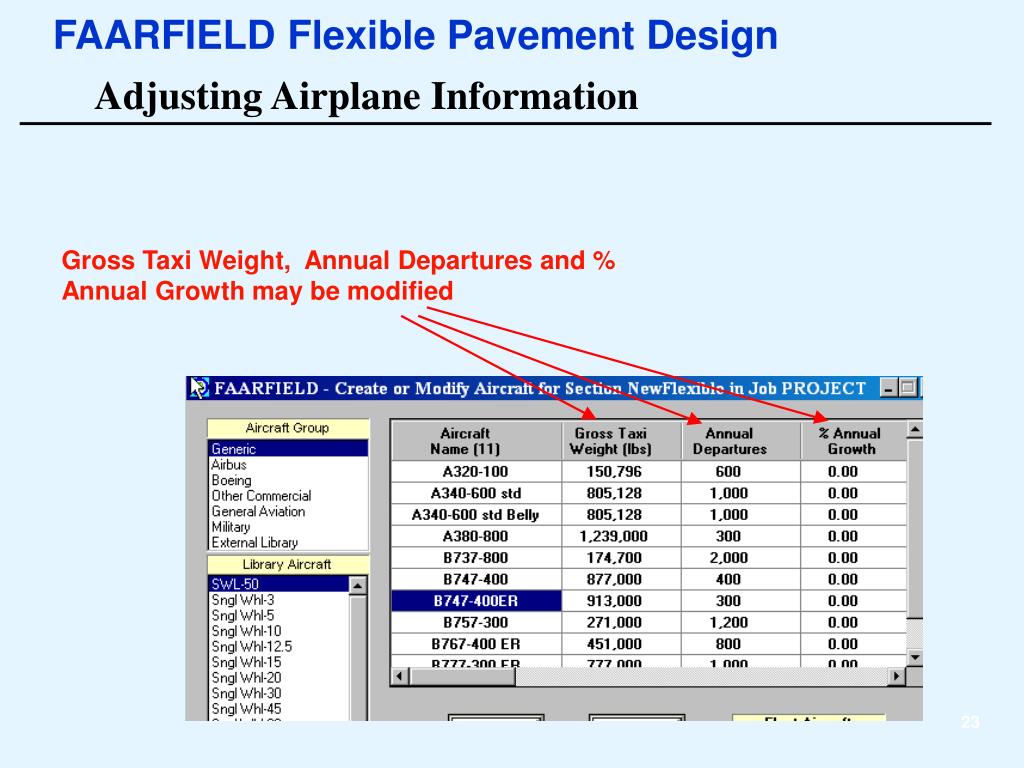

- #Caltrans flexible pavement design software software
- #Caltrans flexible pavement design software plus
- #Caltrans flexible pavement design software simulator
The recommendation is to use the higher of the two structural capacity values estimated for a particular pavement project. The first model can estimate the structural capacity based on the initial transition probability and relevant design parameters, while the second one deploys the terminal transition probability along with other design parameters. In particular, two distinct Empirical-Markovian models are developed to estimate the pavement structural capacity in terms of relative strength indicators such as the structural number (SN) and gravel equivalent (GE). In addition, typical pavement design factors are included as related to traffic loadings, materials properties, and climate conditions. These two transition probabilities have a major impact on the pavement performance trend predicted using Markovian processes. The key stochastic parameters are the initial and terminal deterioration transition probabilities typically estimated from pavement distress records. Lastly, simplified methods were developed for estimating subgrade stiffnesses (resilient modulus) based ondynamic cone penetrometer (DCP) tests, California bearing ratio (CBR) tests, and R-value tests.It is recommended that CalME 3.0 be implemented for pavement design, that the calibration be updated with new data approximatelyevery 3 to 5 years, that Caltrans traffic databases be checked before they are used again for recalibration, and that use of the recently updated Caltrans DIME database of as-built data be considered for future calibrations.An Empirical-Markovian approach is proposed to estimate the pavement structural capacity as a function of key stochastic and design parameters. Fifth, minimum aggregate base thicknesses were developed based on calculations of permanent deformationunder construction traffic.

Fourth, new damage modelshave been introduced for cement-stabilized bases and cement-stabilized and lime-stabilized subgrade materials to correct problems withthe models in CalME 2.0. Third, theprogram now has been given the ability to model PDR using cold central plant recycled (CCPR) materials.
#Caltrans flexible pavement design software plus
Second, the updated program also includesnew damage models and transfer functions for in-place recycling materials, including full-depth recycling (FDR) with foamed asphalt pluscement and cement stabilization, and partial-depth recycling (PDR) with emulsified asphalt and foamed asphalt plus cement.

First, the old software’s fatigue cracking transferfunctions for hot mix asphalt (HMA) on aggregate base, cement-stabilized bases, and portland cement concrete have been recalibratedusing a new approach for the calibration of mechanistic-empirical pavement design methods this approach uses “big data” frompavement management systems, explicitly and separately considers between-project and within-project variability, and uses tens tohundreds of times more performance data than are used in conventional calibration methods.
#Caltrans flexible pavement design software simulator
CalME 3.0 retains the same incremental-recursive damage approach and the same forms for damage models and transferfunctions as CalME 2.0, which was validated using accelerated pavement testing data from Heavy Vehicle Simulator (HVS) test sectionsand the WesTrack experiment.The following enhancements and additions are all included in the revised program.
#Caltrans flexible pavement design software software
The CalME flexible pavement simulation and design software program has been completely recoded as a web-based application calledCalME 3.0.


 0 kommentar(er)
0 kommentar(er)
